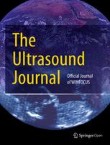A retrospective evaluation of point of care ultrasound for acute cholecystitis in a tertiary academic hospital setting
In 2008 the Council of Emergency Medicine Residency Directors delineated consensus recommendations for training in biliary ultrasound for the “detection of biliary pathology”.
